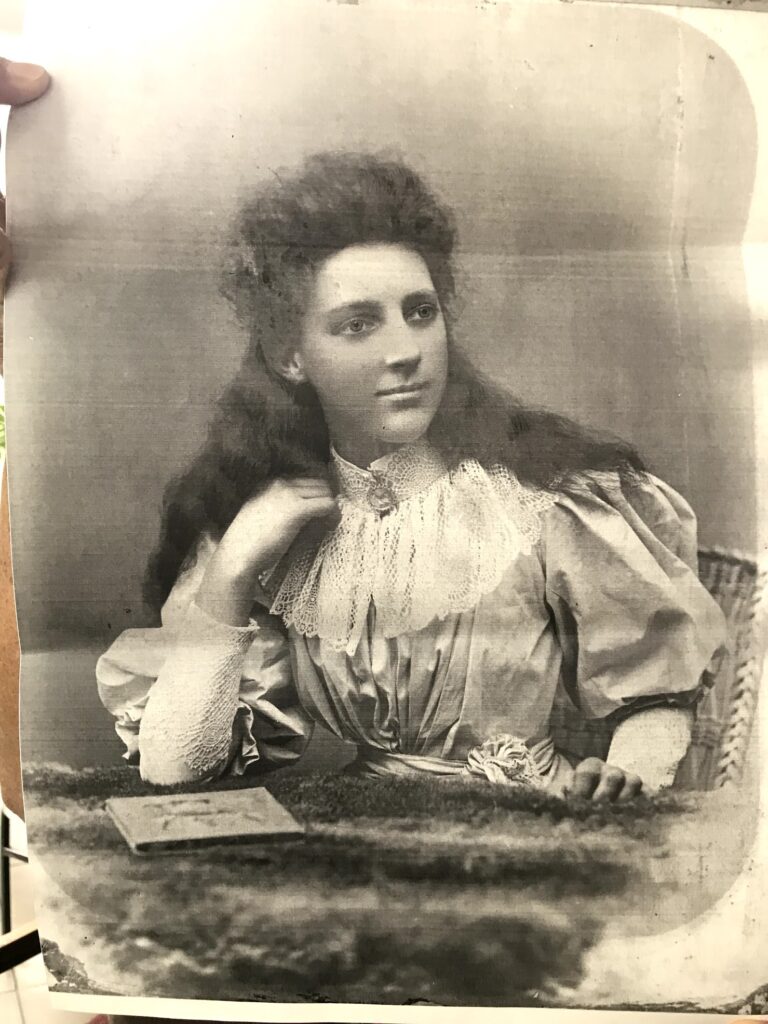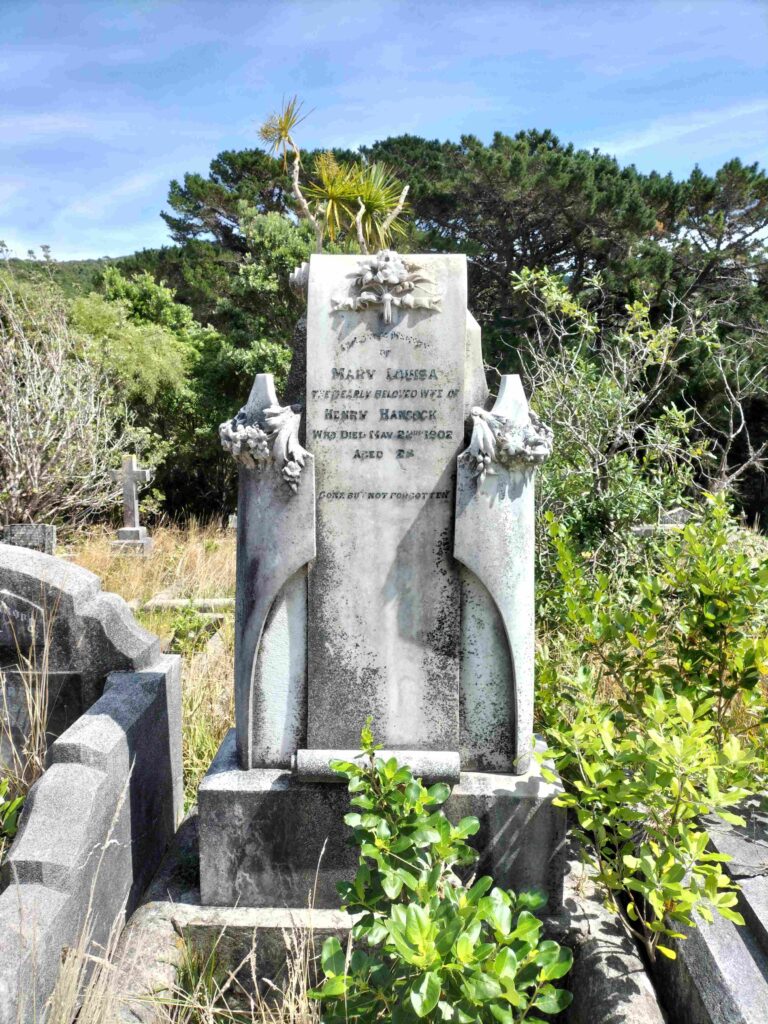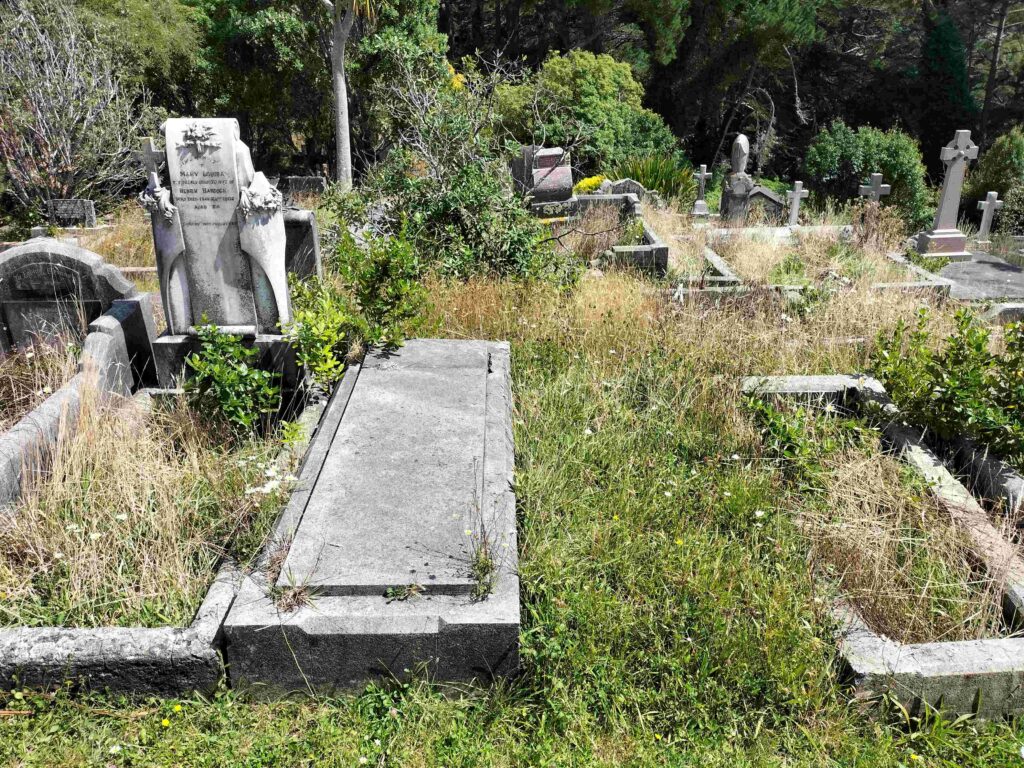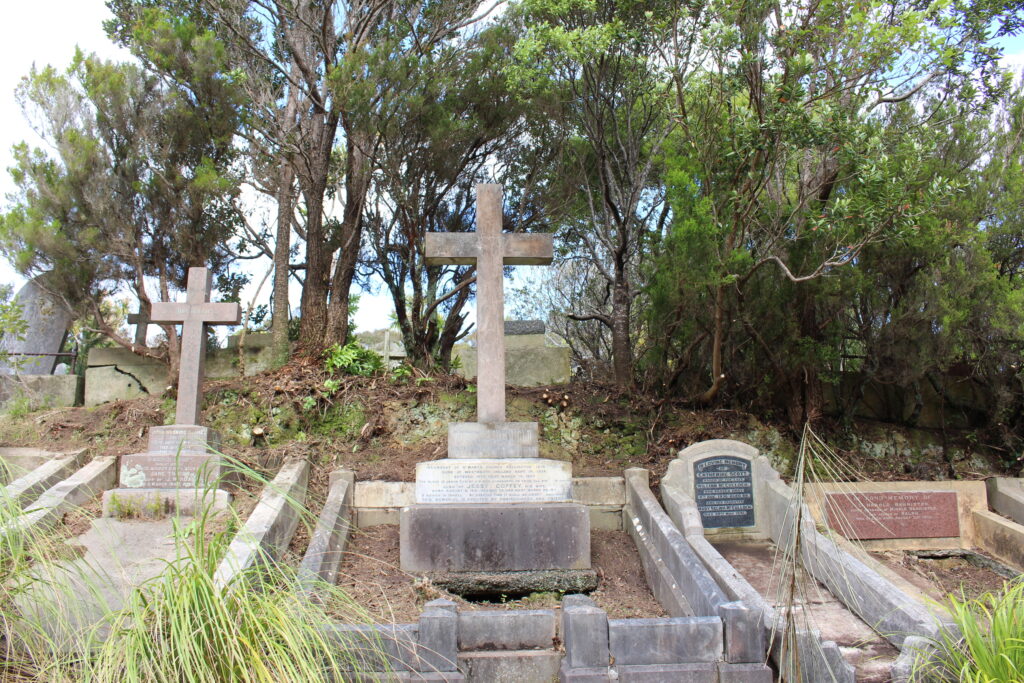Our heads were turned first by the Hancock plot, and after a little delving realised the connection with a plot three along to the right. This is the story of the Wickens family which was kindly supplemented by a descendant.
Frederick Nimrod Wickens, born 1830 in Sussex, married firstly Maria Stornton in 1852. His occupation was a land surveyor. He was one of many children and as not all could inherit the family farm, in 1856 he travelled alone to New Zealand in search of an easier life. He settled in Dunedin and described himself as a gentleman. He made an application for land from the Crown in February 1860 which he then subdivided to create the village of Frant (named after a village in Sussex) at West Harbour.
Frederick was widowed in 1866 and returned to England where he married Elizabeth Turner Peek in 1871 in Sussex. She was aged 20 and the illegitimate daughter of William Turner, an auctioneer and surveyor. She was also an artist and the family still have some of her drawings. Their children Frederick William, Trayton George and Mary Louisa (May) were born in the following years.
In 1878 the family travelled as steerage passengers on the ‘Auckland’ to New Zealand. The younger sons Frank Nimrod and Stanely Huia were born in New Zealand. Over the following years, Frederick’s jobs ranged from running a Coal & Wood business, local councillor and picture framer.
Elizabeth died in 1896. According to the family, she never really recovered following the birth of Stanley. The family then moved to Wellington. Frederick struggled with his young family and at times Stanley was sent to Te Aro school at a young age to be cared for. Money was short and May was sent out to get a job as a shop assistant. Family letters home reflect a general tone of disillusionment at how difficult life was in New Zealand.
In 1897 Frederick acquired the lease of the Ponsonby Hall off Abel Smith Street and lived in the quarters attached. The hall could be let from the Wickens for ‘Evening parties, socials, dancing or other classes’
Son Trayton George Wickens opened a studio in Manners Street called ‘T G Wickens & Co’, “for executing high class Photography in all its branches, at very low prices”. In 1899 he registered the copyright for ‘the design for a medal in commemoration of departure of New Zealand Second Contingent to the Transval’ and sold these in the form of a sterling silver medal with 5% of proceeds from the sale being donated to the Patriotic Fund. He died aged 26 in 1900 from typhoid fever and was the first interment in the righthand side plot.
Daughter May married Henry Arthur Hancock in 1900. He was a telegraph cadet. She died in 1902 of tuberculosis and he erected this magnificent headstone for her. He remarried to Lena Langdon, the divorced wife of Hart Langdon in 1923. Henry and Lena are also interred in this plot but are not named on the headstone.
Son Frank Nimrod Wickens died aged 24 from meningitis in 1908 and was the second interment in the Wickens’ plot.
Frederick Nimrod Wickens followed in 1909, aged 80, after a long illness. In his will, he bequeathed a section in the village of Frant (section 32a and 32b upper harbour west) to his son Arthur Henry.
In 2018,the Public Trust advertised its proposal to become manager of section 32A and 32B of Upper West Harbor as the owner, Frederick Nimrod Wickens “is believed to no longer be resident in New Zealand, or even whether he is alive or dead”. So if there are any Arthur Henry Wickens descendants out there, do come forward and claim your land …

Mary Louisa Hancock





